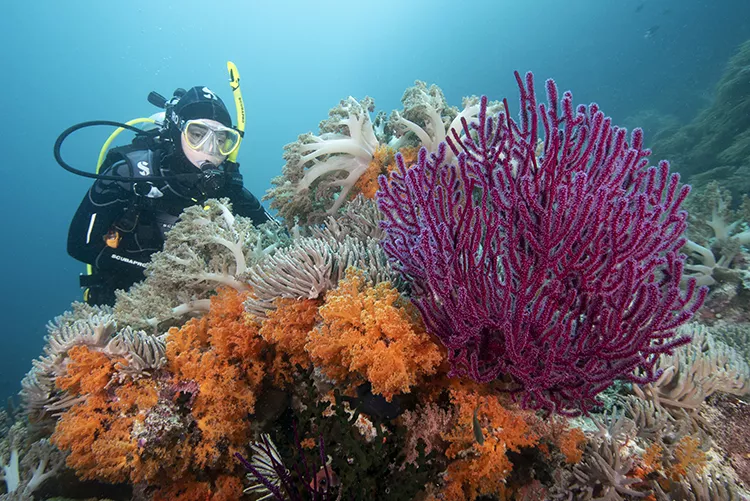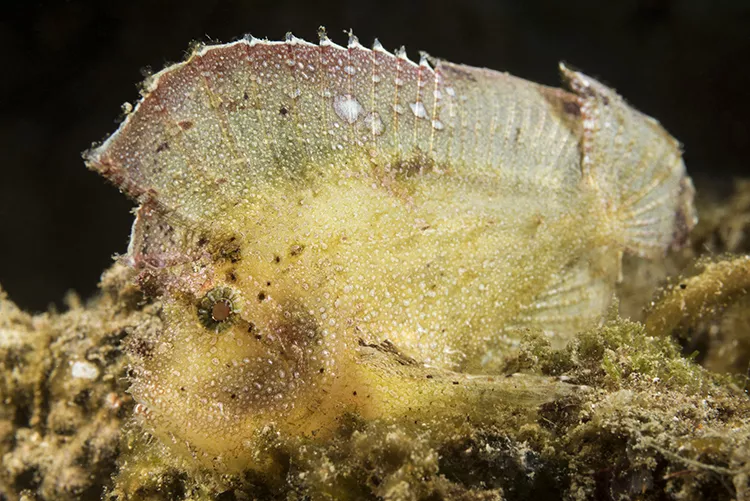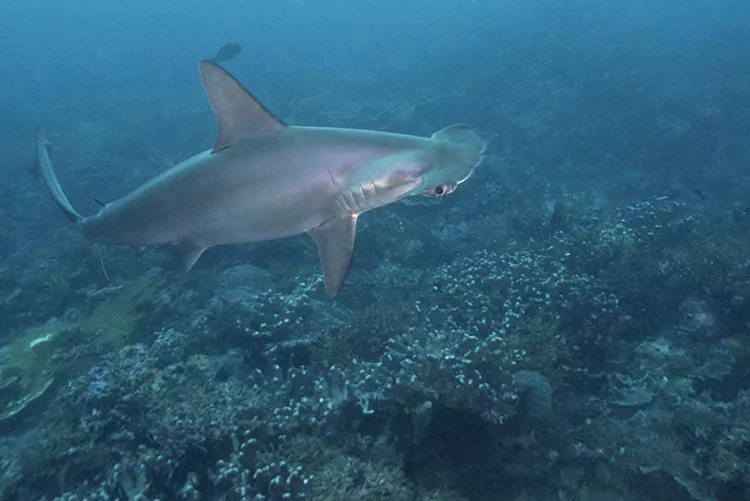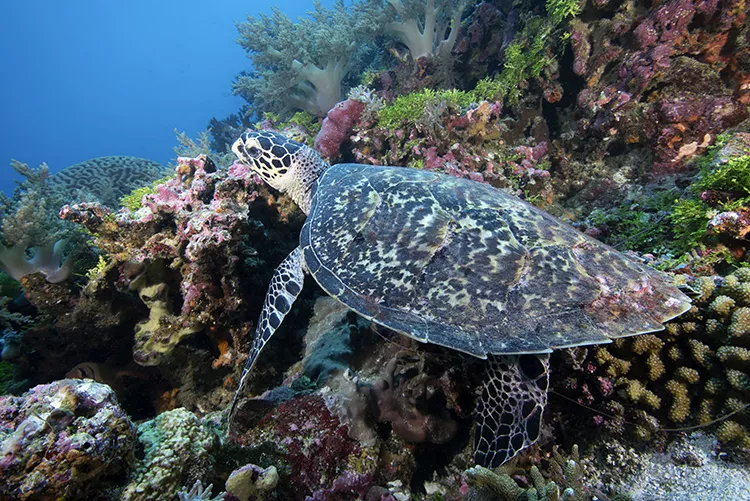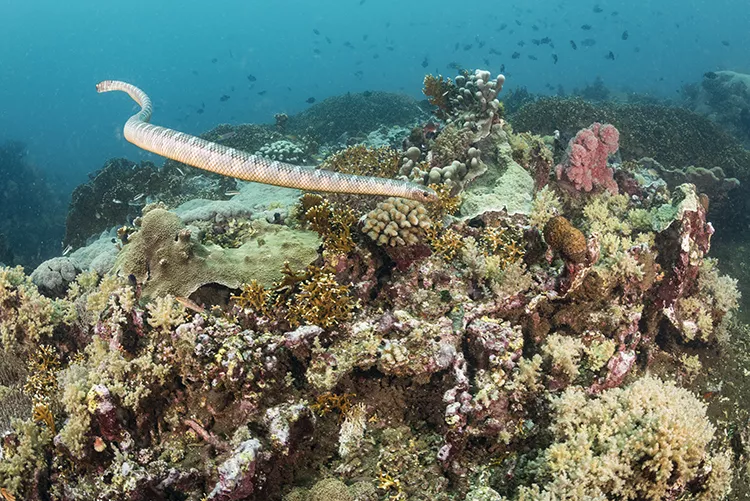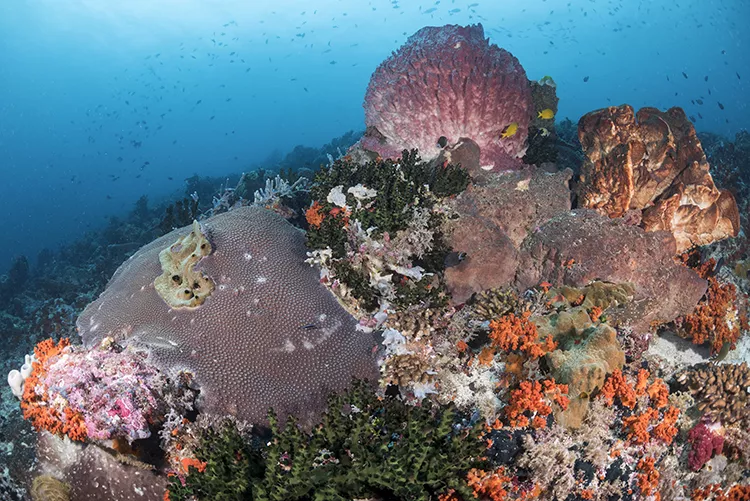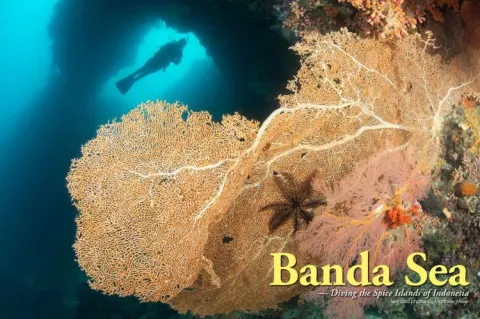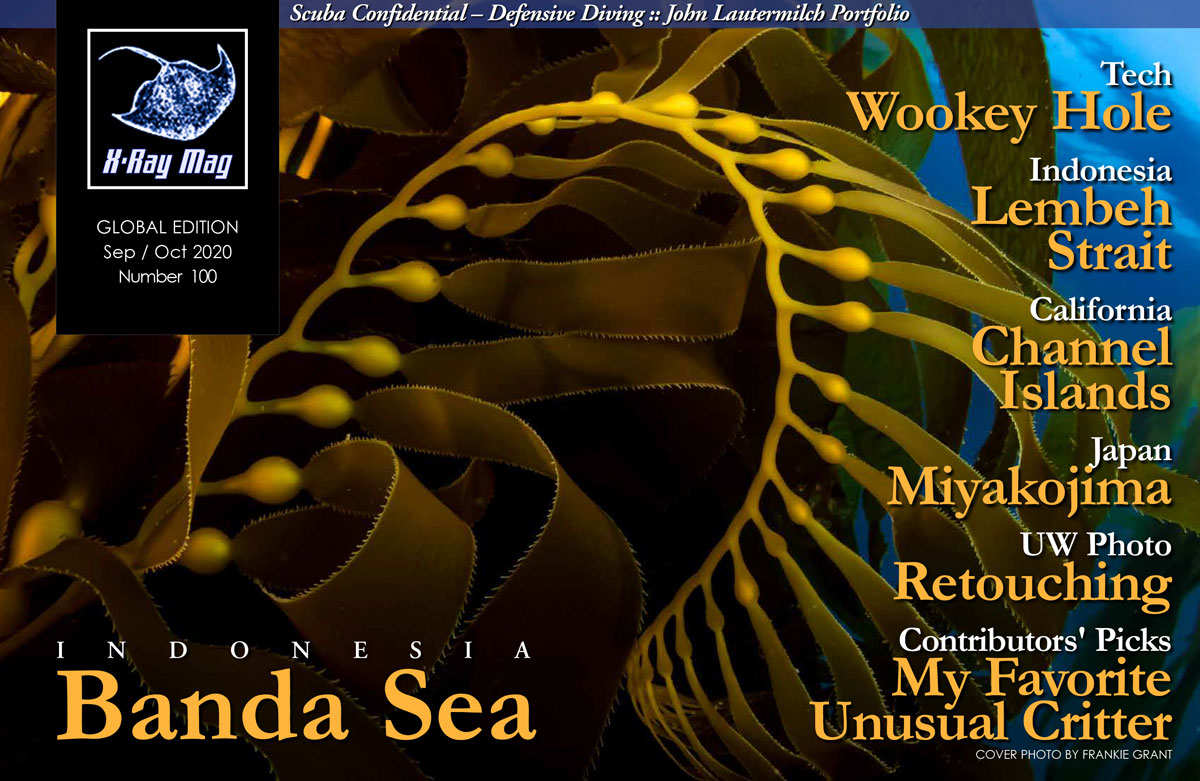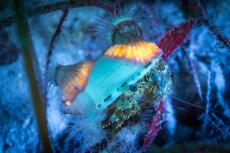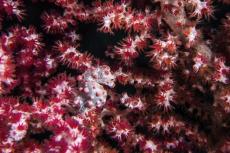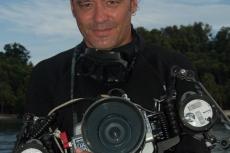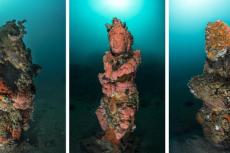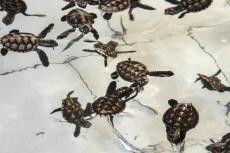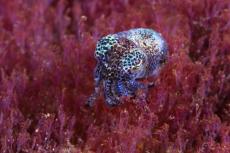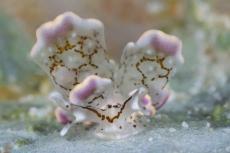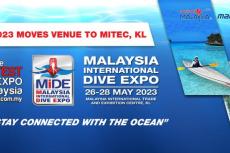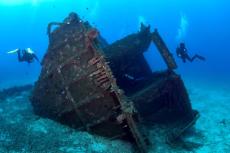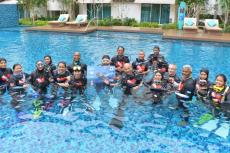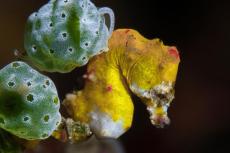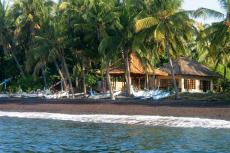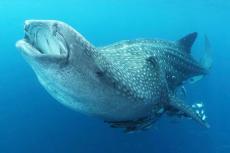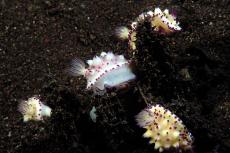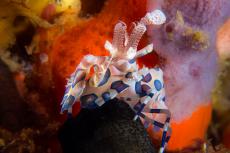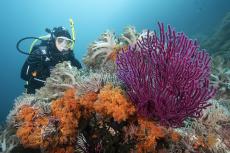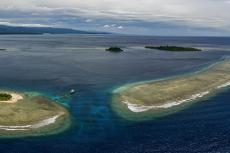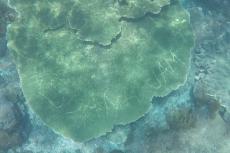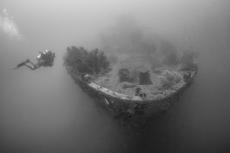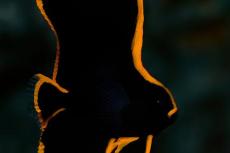Five minutes into my first dive in the Banda Sea, I came face-to-face with a scalloped hammerhead shark, gliding effortlessly in its underwater realm as it emerged from the depths to investigate the alien visitors descending from above. A second hammerhead swam past a moment later but was less bold in its approach and quickly disappeared back into the abyss. I had come to this remote corner of the globe after hearing stories of schooling hammerhead sharks, abundant sea snakes, magnificent coral formations, huge sponges and the possibility of observing other pelagic migrants such as manta rays, false killer whales, leatherback sea turtles and the pygmy blue whale. My efforts would not go unrewarded.
Factfile
Matthew Meier is a professional underwater photographer and travel writer based in San Diego, California, USA.
To see more of his work and to order photo prints, please visit: matthewmeierphoto.com.
The Banda Sea is a region within the Indonesian archipelago, located in Southeast Asia, between the Indian and Pacific Oceans. It is situated south of the Maluku Islands, east of the island of Sulawesi and north of Timor Island. This secluded body of water contains dozens of volcanic islands in an area covering over 180,000 sq mi (470,000 sq km).
The Banda Islands, also known as the Spice Islands, helped put the area on the map in the early 1600s when the Dutch East India Company took control of the trade routes for native spices such as nutmeg, pepper and cloves. The Dutch eventually acquired all of Indonesia and governed the nation until the end of World War II, when the Indonesian people were ultimately granted their independence. To this day, many of the islands in the Banda Sea remain uninhabited and most are separated by large expanses of open ocean. Of the 267 million people living in Indonesia (making it the world’s largest island nation), only about 19,000 reside within the Banda Islands.
Getting there
Our eight-day voyage began and ended in Ambon, which is the capital city of the Maluku province at the northern end of the Banda Sea. Daily local flights exist from several destinations within Indonesia, including Bali, Jakarta, Makassar and Manado. Upon arrival, my dive partner and I transferred to our liveaboard dive boat anchored in the bay, as it is the only way to access this out-of-the-way destination. The Solitude Adventurer, a recently renovated, spacious and stable 118ft (36m) long aluminum catamaran, would be our home for the next week.
Ambon is famous in and of itself as one of the top macro and muck diving destinations on the planet. Divers will often visit for a week or more to experience as many of the weird and wonderful critters that exist here as possible. Our travel plan only allotted time for two check-out dives with which to dial in our buoyancy, knock off the rust and work on photographing those spectacular macro subjects. I had grand illusions of finding the endemic and rare psychedelic frogfish but instead was treated to several leaf scorpionfish, multiple seahorses, zebra crabs and Coleman shrimp on fire urchins, a cute baby barramundi, mating solar-powered nudibranchs, ornate ghost pipefish, a painted frogfish and a pair of white-eyed moray eels—quite the impressive array of species, and not a bad consolation prize, especially for check-out dives.
Suanggi Island
After dinner, we departed Ambon’s harbor and made an overnight crossing to Suanggi Island, arriving in time for an early morning dive at a site called Jackpot. Home to deep-water pinnacles covered in large coral formations and huge pink barrel sponges, as well as the aforementioned curious hammerheads, this was our first taste of what the Banda Sea had to offer. Our second immersion of the morning was on a nearby wall at a site called Ping Pong. We encountered several hawksbill sea turtles cruising over the coral formations, had our first of many sightings of an olive sea snake, an elusive bumphead wrasse made a brief appearance and there were plenty of massive sponges, some too large to effectively photograph properly without my fisheye lens.
During our surface interval, the boat motored to nearby Run Island where we made two exploratory dives in the afternoon. Sea conditions prevented us from accessing the normal dive sites around the island, so we anchored in a more protected area and dived sloping walls inundated with hard coral formations and schooling fusiliers, mammoth sea fans, more impressive sponges and several sea turtles.
Manuk Island
We awoke at Manuk Island the next morning a little later than expected because rough seas dictated a slower-than-usual passage, as we departed the Banda Islands for the Forgotten Islands. The wind and waves that had picked up overnight were also contributing to choppy sea conditions around Manuk that were not conducive to responsibly launch divers in small inflatable boats. The catamaran was capable of cutting through the swell to get to the premier dive sites, but boarding the skiffs from alongside the mother ship was not advisable and nor could the RHIBs navigate safely through the waves to get around the island themselves.
Similar to the previous afternoon, we wisely elected to anchor on the leeward side of the island and spent the day diving a site called Coconut Corner. The visibility was not ideal due to the turbulent seas, but this site boasted some of the largest hard coral formations I had seen to date in my nearly 30 years of diving experience. Amazing coral bommies covered in plate and staghorn corals, interlaced with sea fans, leather corals and both green and purple elephant ear sponges.
Manuk Island is also famously known for its considerable number of olive sea snakes and we saw copious amounts on every dive, along with a few banded sea kraits thrown in for good measure. Both species breathe air and each trip to the surface for oxygen puts them at risk of predation, so it should not be surprising that the snakes use every bit of cover they can find to conceal themselves when venturing out in the open. Perhaps also exploiting the body heat we humans emit, divers are often startled as snakes emerge from under an arm or between a pair of legs while traveling to and from the surface or simply while inspecting their new neighbors.
We made three dives at this site throughout the day and spotted both hawksbill and green sea turtles, a small school of bluefin trevally, numerous jacks and triggerfish hunting on the reef and a colorful, juvenile rockmover wrasse in constant motion, doing its best to stay hidden and avoid being photographed.
Forgotten Islands
Departing Manuk, we headed southwest toward the Forgotten Islands of Serua and Kekah for another overnight transit. The wind and waves gradually subsided throughout the evening, allowing for faster cruising speeds and a much more restful night’s sleep.
Serua is a relatively large island with multiple volcanic cinder cones, one of which is still belching steam. Kekah, located just adjacent, is so minuscule it barely appears on the map. The Adventurer anchored in a small protected cove behind Kekah Island and we proceeded to make four dives at a site called Kekah’s Corner.
The topography beneath the waves consisted of a sloping wall of corals with occasional barrel sponges and a shallow coral garden at the top of the reef. Water temperatures were a few degrees cooler than earlier in the trip and several degrees cooler below the thermocline that materialized between 60-90 ft (18-27m). There was also a steady, nutrient-rich current that turned most dives into a pleasant, albeit hazy, drift.
Scalloped hammerheads
The main attraction at Kekah’s Corner this time of year is the consistent presence of scalloped hammerhead sharks. They were seen at depth, often below the thermocline, in large schools or walls of sharks, and at other times, appeared alone or in small groups, cruising along the wall or navigating the shallows. As it had seemingly been throughout our trip, the visibility was not ideal, and on this particular day, the topside overcast conditions contributed to a very dark underwater environment for photography.
We saw hammerheads on every dive, but as luck would have it, I was either not able to get close enough to capture them or did not see them until they were already past me. On one dive, I spent the first 45 minutes staring off into the blue, waiting in vain for the sharks to appear, and then was sadly oblivious to a hammerhead swimming by only a few feet away, when I had finally let a hawksbill sea turtle distract me for a photo.
Fortunately, we had the flexibility of an extra day on our itinerary and a group decision was easily made to stay for added time with the hammerheads. The next morning, I photographed a spectacular sunrise as it sprung up from behind Serua Island. Over time, the sky transitioned into a beautiful, sunny blue with intermittent puffy, white clouds. The colors of the reef expanded dramatically with the addition of sunlight, and it seemed we were diving an entirely different site as we relished four more chances to swim with the sharks.
Descending for our first dive, I noticed that the hazy visibility had somewhat improved overnight but would still be presenting challenges—most notably, the inability to see the hammerheads coming from far off, contrasted with the need to be in their immediate vicinity for clear photos. Wanting to take advantage of the gorgeous sunlight, I attempted to reshoot several reef scenes I had captured the day before, all the while keeping one eye in the blue for the hammerheads.
We came across the same distracting sea turtle from the day before and discovered a sizable broadclub cuttlefish hovering in the shallows. I photographed several sea snakes throughout the day and a massive honeycomb eel, poorly hidden under a small coral head.
On one dive, the current swept us farther than normal down the reef and we saw the heart-wrenching destruction that dynamite fishing had inflicted on the environment. Healthy, vibrant corals were reduced to a field of broken rubble that would take years, if not decades, to rebuild—an entire mini-ecosystem destroyed in the short-sighted goal of the few fish that floated to the surface after the explosion. According to the Kekah’s village chief, the devastation was caused by a desperate act of struggling fishermen from a distant neighboring island.
Hammerheads were again witnessed on every dive, and I personally saw them on three of four but regrettably, I never managed to got close enough for a publishable photograph.
Hatta Island
The boat pulled anchor soon after our last dive, and we started a 12-hour crossing back to the Banda Islands. Favorable tail winds and calmer seas made for a smooth ride up to the shallow, submerged reef called Karang Hatta. Just south of Hatta Island, this colossal crescent-shaped reef system is exposed at low tide and features colorful coral walls with schooling jacks and fusilier fish, immense elephant ear sponges and huge sea fans. I saw several moray eels, an octopus out hunting in the daylight, plentiful reef fish and a cute baby whitetip reef shark swimming amongst the branching corals.
After two dives, we transitioned up to Hatta Island and made our third dive of the day at a site called Goa Hatta. Also known as Hole in the Wall, this dive begins with a vertical descent through a gap in the reef, which opens up to a wall covered in large sea fans, barrel sponges, black sun corals and colonies of leather corals. I spent a good bit of time working with my dive buddy and underwater model to get her silhouetted in the hole while framing a large sea fan in the foreground. Our dive guide, Eme, was instrumental in preparing us in advance for what to expect and after several attempts, with numerous hand signal adjustments, I was very excited with the results (see title page).
Banda Neira Island
Departing Hatta, we made the short trek up to Banda Neira Island where we anchored in the protected harbor for the night. Our last dive of the day was at twilight on the other side of the anchorage in anticipation of observing mating mandarinfish. Hovering near the edge of a field of staghorn corals, we witnessed several males displaying and posturing for the females in hopes of pairing off for a frantic rush up into the water column to release eggs and sperm. Mandarinfish complete this ritual every night at dusk, though divers do not always get to see the entire mating behavior.
The next morning, after our second night at anchor, we shifted to the far eastern edge of the island to dive a spot called Pohon Miring. Dropping into the water near a handful of local fishermen in wooden canoes, we descended down a wall with massive elephant ear and barrel sponges to find a swim-through at 80ft (24m), which was lined with colorful sea fans. The current picked up as we rounded the next corner, accelerating the remainder of the dive, and we finished our safety stop secured by reef hooks in a coral garden at the top of the wall.
A short distance away sits an offshore exposed rock that was to be our second dive of the day. Known as Batu Kapal, or Ship Rock, this site has multiple underwater pinnacles, which are covered in aggregations of reef fish, sea fans, sponges, orange soft corals and large colonies of black sun corals. Following the dive, the liveaboard anchored back in the harbor at Banda Neira, and we used the skiffs to access our last dive of the day.
A volcanic eruption in 1988 decimated the existing reef, as molten lava ran from the top of the cinder cone all the way down to the shoreline and into the ocean. Since that time, at a dive site now called Lava Flow, the corals have repopulated, flourished and exploded into one of the most impressive hard coralscapes I have ever seen. We were informed that scientists are in fact studying this reef to try and discover the keys to its mind-blowing recovery in hopes of replicating the formula at other reef systems across the globe. There were immense fields of staghorn corals, incredible plate coral formations, colorful expanses of lettuce corals, large pink barrel sponges and schools of chromis swimming amongst it all.
Topside excursion
After a quick shower and rinse of the dive gear, we boarded the skiffs to transfer across the harbor for a land tour of Banda Neira. Once on land, we were met by a local tour guide who took us to a museum filled with artifacts, paintings and historical drawings depicting life in the Banda Islands during the time of the early Dutch settlement. Sadly, the treatment of the locals was not always kind, similar to the history of other invading nations around the globe. One painting in the museum actually depicted barbaric public beheadings and dismemberments of the natives at the hands of mercenary Samurai warriors as a means to maintain power and control.
The tour continued through town and up into the hills where we witnessed the local farming of almonds, nutmeg and cloves. At the top of the hill, we came upon Fort Belgica, which was built by the Dutch in 1611 to protect their colony and also serve as a jail. The pentagon-shaped brick fortress is fully surrounded by an additional barrier wall, which has defensible columns at each of the five corners. The fort now serves as a tourist attraction and is largely empty except for a handful of bats roosting in the sleeping quarters. On our way back through town, we shopped for spices, dried fish, fruits and pastries at various market stalls before returning to the liveaboard for an elaborate BBQ dinner of grilled chicken, pork and shrimp served on the upper deck under the stars.
Nusa Laut Island
One more overnight crossing followed, as we pulled anchor after dinner to continue the trek north back towards Ambon. Our last day of diving began in the early morning hours at Nusa Laut Island. We dropped in at a site called Ameth to a stunning wall of corals that transitioned into a coral garden on the white sandy bottom, all of which was teeming with schools of chromis and fusiliers. The mild current was just strong enough to make for a pleasant drift dive and keep all of the reef fish swimming in unison above the corals.
Bobooi Island
A short ride later, we arrived at Bobooi Island to complete our final dive just offshore on a small, shallow coral outcropping known as Pombobooi. The site boasted similar coral structures and reef fish to our morning dive, though I was more impressed with the panoramic aerial view of the island I captured with my drone.
The remainder of the afternoon was spent motoring to Ambon’s harbor, where once anchored, we enjoyed a spectacular steak dinner with the guests and crew on our last night together. The evening was spent sharing stories and packing gear in preparation for the next morning’s departure.
Afterthoughts
Time always goes too quickly on these adventures, and eight days disappeared into the rearview mirror far faster than seemed possible. It was an absolute privilege to have the opportunity to dive in this remote and unspoiled place, and I was very thankful to become acquainted with all the highlights of the Banda Sea, even if Mother Nature did not always provide optimal photographic opportunities—so goes the cruel irony of divers’ quests for pelagic creatures and the prospect of perfect conditions with plentiful interactions that keeps us coming back. In a perfect example of the “you-should-have-been-here-last-week” scenario, the group that came on board immediately after us jumped into clear waters with a manta ray, false killer whales and hammerhead sharks on their very first dive!
The Banda Sea is a spectacular place to explore, and I hope you get the opportunity to experience it for yourself. I am very much looking forward to a return visit. The pygmy blue whales and leatherback sea turtles are still out there waiting for us. ■
The author would like to thank Solitude Liveaboards and Resorts (Solitude.world) for hosting this excursion and the crew of the Solitude Adventurer for taking such good care of us. Thanks also go to Scubapro (scubapro.com) and Blue Abyss Photo (blueabyssphoto.com) for their assistance with underwater dive and photo gear.

